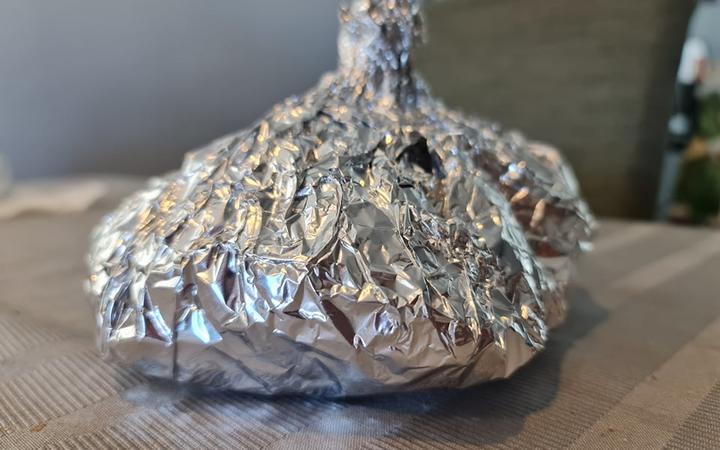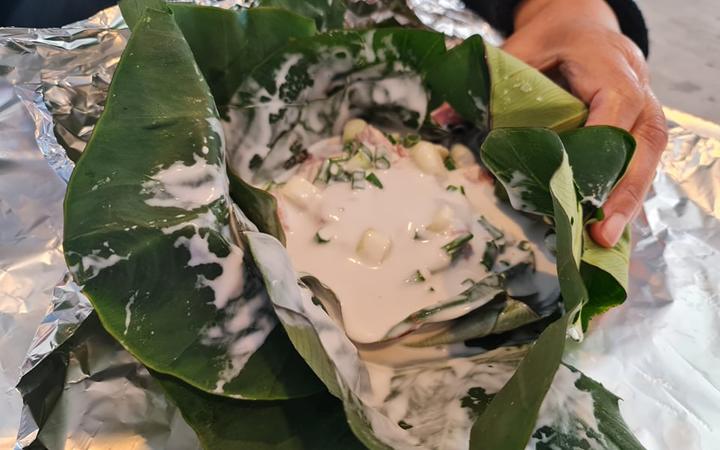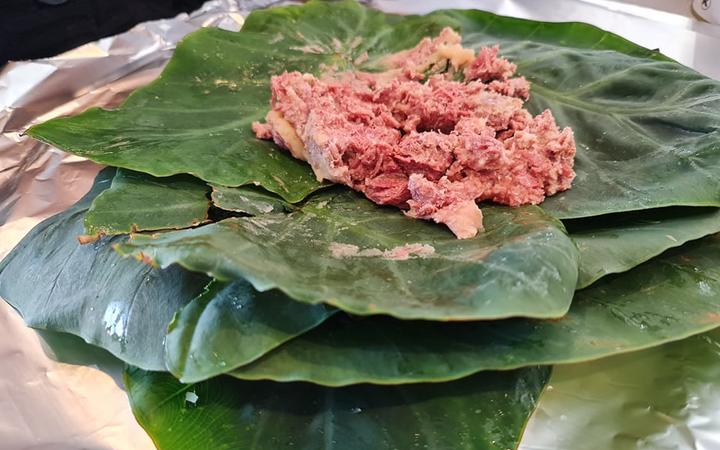By
RNZ Pacific staff share their Christmas memories and traditions.
When I think of Christmas, I’m reminded of the Tongan dishes that my parents and siblings prepare for our big lunch feast on Christmas day.

Growing up, I would help my mum with a dish called lu sipi.
Lu sipi are parcels of goodness. You start off by preparing around two to four square sheets of foil. My mum likes to place them on top of each other so that at the end it looks like a 8-pointed star. Then on top of the pile of foil, place at least eight to ten leaves layered on top of each other, lamb meat (cooked and chopped) placed in the centre and sprinkle diced onions on top of the lamb.
Mum would get everything prepared into mini stations on the dining table, setting up a conveyor belt of sorts for the lu sipi. Some years I’m at the “onions station”, and other years I’m pouring the coconut cream into each prepared parcel.
Pouring the coconut cream into the lu sipi is not as easy as it sounds – well not if you don’t do it the way mum likes it.
She would have her hands underneath the foil, getting ready to gather the ingredients together to form a parcel, but before mum wraps it all up, I come in with my handy dandy ladle to pour coconut cream on top of the meat and onions.
You have to make sure you put enough in to match the portion of the meat, but not too much where it leaks in between the taro leaves. I am guilty of the latter.


Mum then wraps up the foil and taro leaves towards the centre to make a ball shaped lu sipi to go in the oven to cook. Well, that’s the contemporary way of cooking the lu sipi. Traditionally it would be cooked in an underground oven pit called an umu.
We would use the taro leaves from my dad’s garden, which he prepares ahead of Christmas. Everything else you can source from your local supermarket.
You can also switch up the meat option to lu kapapulu (corned beef), lu povi masima (beef salted), lu pulu masima (another type of beef salted) or lu ika (fish).


